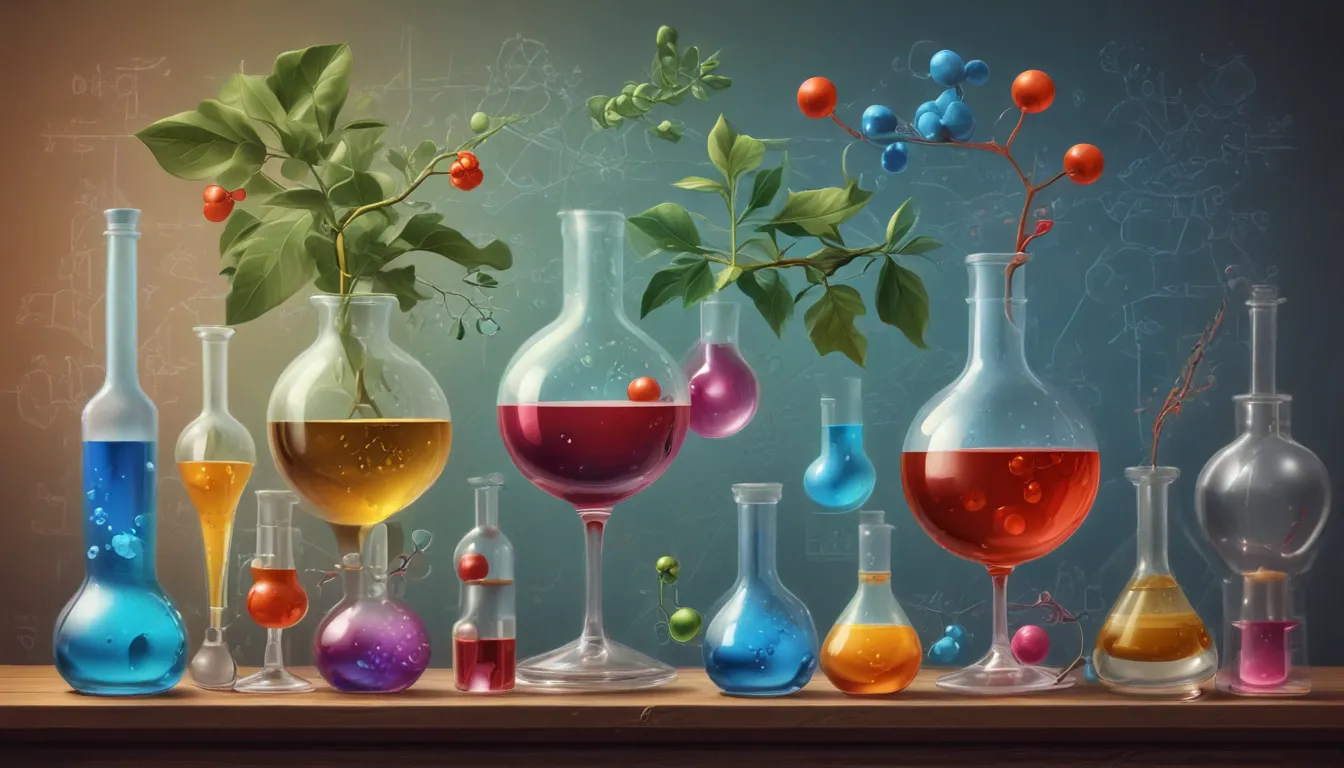A Note About Images: The images used in our articles are for illustration purposes only and may not exactly match the content. They are meant to engage readers, but the text should be relied upon for accurate information.
Embark on a journey into the captivating world of bioorganic chemistry, where biology and organic chemistry converge to unravel the mysteries of living systems. Discover how this field shapes the future of medicine, drives innovation in biotechnology, and revolutionizes the pharmaceutical industry. Let’s delve into eight extraordinary facts about bioorganic chemistry that showcase its profound impact on our lives.
Unveiling the Essence of Bioorganic Chemistry
Bioorganic chemistry serves as a bridge between organic chemistry and biology, delving into the intricate chemical processes that underpin living organisms. It explores the structure, function, and interactions of organic compounds within biological systems, shedding light on the mechanisms governing life at a molecular level.
Crafting Molecules with Purpose
Bioorganic chemists are masterful creators of molecules with specific biological activities. By leveraging their expertise in organic chemistry and biology, they design and synthesize compounds tailored to interact with biological targets, such as enzymes and receptors, to modulate their functions and combat diseases effectively.
Illuminating the Molecular Secrets of Life
Through meticulous study of organic molecules’ interactions with biological systems, bioorganic chemistry unravels the molecular intricacies driving essential biological processes. From enzymatic reactions to genetic expression and cellular signaling, this discipline provides insights critical for understanding life’s inner workings.
Designing Diagnostic Marvels
Bioorganic chemistry’s impact extends to the realm of diagnostic tools, where molecular probes crafted by chemists enable precise visualization of biological processes and disease markers. These probes selectively bind to specific targets, facilitating the detection and monitoring of various health conditions.
Embracing the Biotechnological Revolution
At the forefront of biotechnology, bioorganic chemistry contributes by developing molecules and materials integral to applications like drug delivery, tissue engineering, and biofuel production. By harnessing the power of living systems, this field drives innovation and advancements across diverse industries.
Fostering Interdisciplinary Collaboration
The complex nature of biological systems necessitates interdisciplinary collaborations in bioorganic chemistry. Biochemists, molecular biologists, pharmacologists, and materials scientists join forces to tackle research challenges and pioneer groundbreaking solutions, leveraging diverse perspectives for scientific advancement.
Catalysts of Pharmaceutical Innovation
Bioorganic chemistry’s contributions to the pharmaceutical industry are profound, shaping the landscape of drug discovery and development. Novel synthetic methodologies and insights into drug-receptor interactions have paved the way for more efficacious and targeted medications, improving treatment outcomes for various diseases.
Pioneering Synthetic Biology Frontiers
In the realm of synthetic biology, bioorganic chemistry serves as a cornerstone for engineering novel biological systems with enhanced functionalities. By synthesizing and modifying biological molecules, researchers propel the creation of artificial enzymes, genetic circuits, and synthetic organisms, pushing the boundaries of biotechnological innovation.
Unveiling the Astonishing Tapestry of Life
Bioorganic chemistry offers a unique lens through which to explore life’s fundamental processes. From deciphering new drug targets to devising sustainable synthetic pathways, this discipline continues to deepen our understanding of life’s complexities and inspire groundbreaking advancements in diverse scientific domains.
FAQs: Unraveling the Mysteries of Bioorganic Chemistry
-
What is bioorganic chemistry?
Bioorganic chemistry merges principles from biology and organic chemistry to investigate the chemical processes within living organisms and their constituent molecules. -
What are some applications of bioorganic chemistry?
Bioorganic chemistry finds applications in drug development, enzyme mechanism studies, protein interactions analysis, material design, and sustainable energy solutions exploration. -
How does bioorganic chemistry impact medicine?
Bioorganic chemistry plays a pivotal role in elucidating disease mechanisms, creating new therapies, and enhancing drug delivery systems for improved efficacy and reduced side effects. -
Which key biomolecules are studied in bioorganic chemistry?
Prominent biomolecules studied include proteins, nucleic acids (DNA, RNA), carbohydrates, lipids, and signaling molecules crucial for cellular processes. -
What role does bioorganic chemistry play in environmental science?
Bioorganic chemistry contributes to environmental science by developing eco-friendly energy production methods, analyzing pollutant impacts on ecosystems, and designing sustainable materials and processes. -
Are there career opportunities in bioorganic chemistry?
Numerous career prospects exist in bioorganic chemistry, spanning academic research, industry roles in pharmaceuticals and biotechnology, and government positions focusing on environmental and public health. -
What future prospects lie ahead for bioorganic chemistry?
The future of bioorganic chemistry shines brightly, with anticipated advancements in fields such as synthetic biology, bioengineering, and computational chemistry driving personalized medicine, efficient biofuel production, and cutting-edge diagnostics and therapeutics.
Unlock the Marvels of Bioorganic Chemistry
As you traverse the captivating realm of bioorganic chemistry, marvel at the intricate dance of molecules that sustains life’s essence. From accelerating chemical reactions to crafting precise treatments and unveiling cellular marvels, each discovery illuminates the wondrous tapestry of molecular interactions that shape our world.
Was this information insightful and enlightening? Our dedication to delivering accurate and engaging content reflects our commitment to excellence. Every fact presented is a testament to the collective knowledge shared by individuals like you, fostering a rich tapestry of diverse insights and information. Trust in our devotion to quality and authenticity as we continue to explore and learn together.






